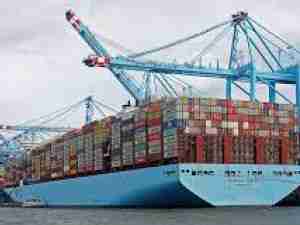'We are truly grateful to California voters for passing this important bond measure,' said Port of Oakland Director of Maritime, Wilson Lacy. 'Funding from these bonds will give the Port the opportunity to finance significant projects that will enable us to move goods quickly, reliably, and safely.' Proposition 1B not only contains funding for critical infrastructure projects, it also provides funds for environmental solutions to address the impacts of increased goods movement in our state.'
Waterborne commerce through California ports accounts for 43% of the country's total goods. The volume of business through California ports has increased five times faster than corresponding growth in infrastructure. Last year, the Port of Oakland moved over 2.3 million teus.
The Port of Oakland has identified projects, both near the Port and at gateways connecting critical goods movement corridors with the rest of the country that would benefit from Proposition 1B funding. Priority projects include:
* 7th Street Grade Separation - This project will increase the Port's capacity for moving cargo through the Port area. The current rail bridges and roadways were constructed in phases between 1930 and 1954 and cannot meet the rail infrastructure requirements for future Port growth. Replacing the existing rail bridge will also involve the widening of Seventh Street (7th St), a major arterial street that connects the Port with I-880.
* 'Green' Rail Facility - This project will create an intermodal rail terminal at the location of the former Oakland Army Base. The project will include the construction of container loading and unloading tracks, container parking areas and connections to the major railroad lines. This facility will increase rail terminal capacity from approximately 640,000 containers per year to 1.7 million containers. This project will also include the development of a state-of-the-art, clean-air facility, with fully-electric yard operations.
'We also thank the Governor and our state legislators for their continued leadership and commitment in the area of transportation and goods movement,' said Oakland Board of Port Commissioners President Anthony Batarse. 'These transportation funds will help us reach our global customers and at the same time, provide hundreds of local jobs.'
Over the past decade, the Port has spent close to one billion dollars to modernize and expand the capacity of its marine terminals. The projects include dredging channels to -50 feet, creating modern intermodal rail terminals, and converting a former naval supply center into state-of-the-art marine terminals. The Port has also been an industry leader in supporting environmentally-friendly initiatives that benefit the local community by reducing harmful emissions from cargo-handling equipment, port-area trucks, and other maritime- related operations. Now, the Port is turning its focus to increasing the capacity and velocity of the surface transportation network that provides access to the Port.










